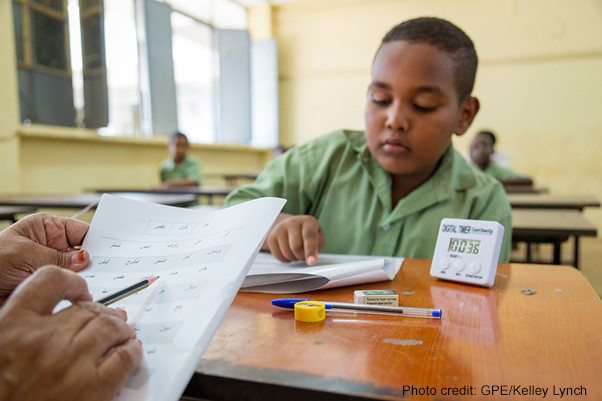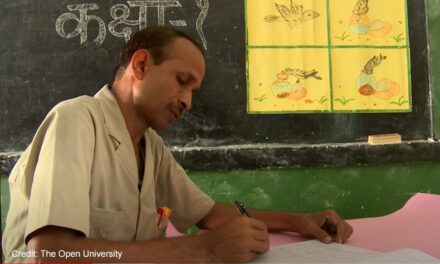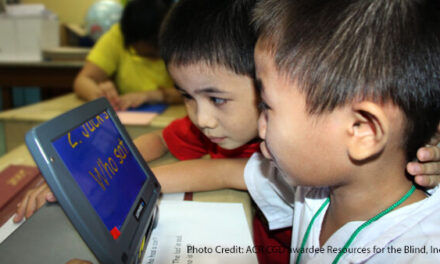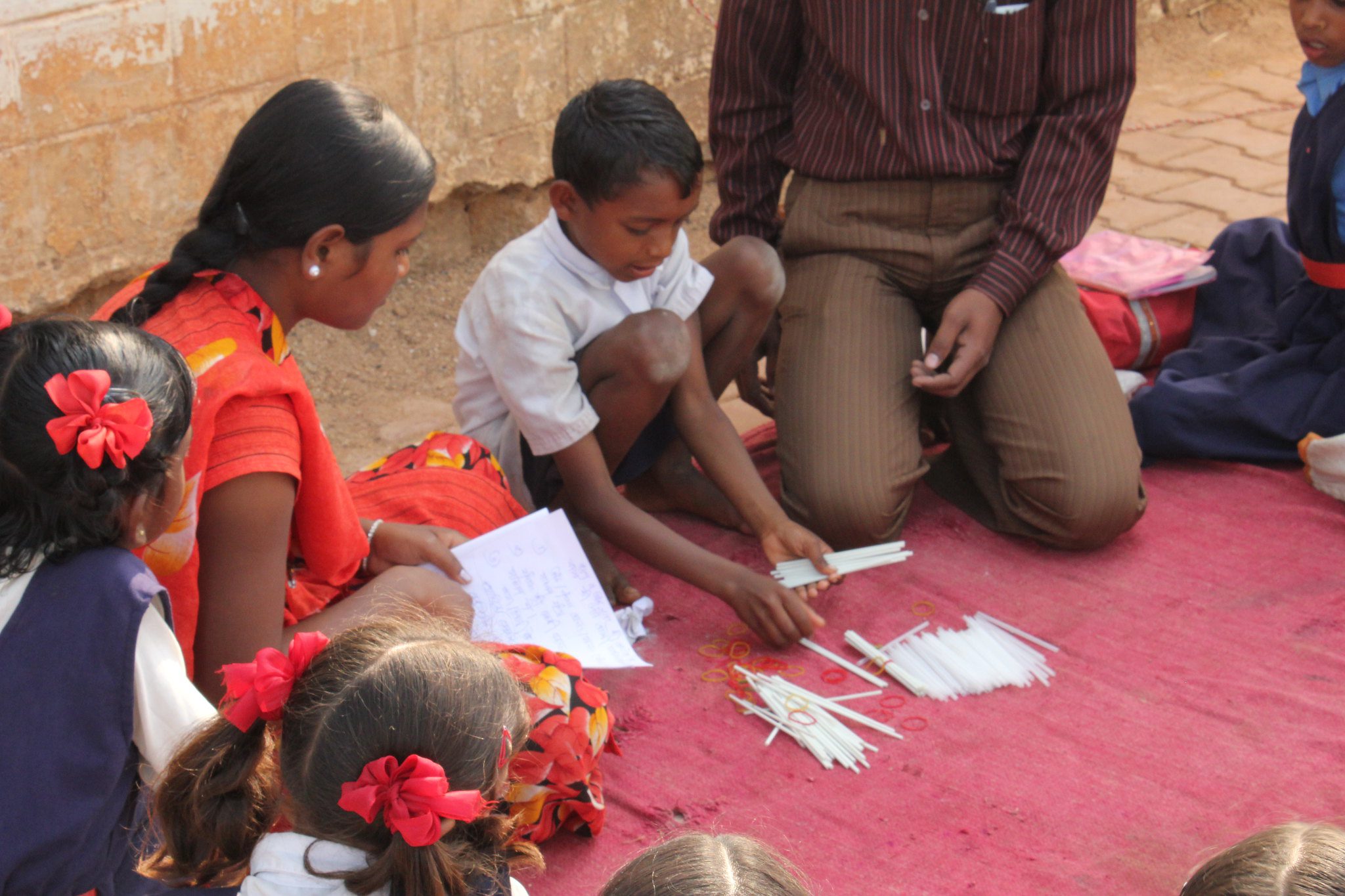This blog was written by Rhona Brown, Lina Adinolfi, Maen Al Awes, Lizzi O. Milligan, Alicia Mills, Samantha Ross and John Simpson, drawing on the UKFIET-British Council event on “Language and Its Critical Role in Education and Training Around the World”.
Assessment and evaluation activities take up a significant amount of time and money and can be high-stakes for individuals, organisations and systems. School examinations are seen as measures of the quality of schooling and results are used to determine access to further study and employment. National assessments are used for accountability and can be high-stakes in global education rankings as well as influencing the direction of interventions and reforms. Evaluations of interventions are used to determine ‘what works’ and evidence from them informs policy and practice decisions.
- But what if the evidence you’re collecting does not measure what you think it’s measuring?
- And what if the processes used in assessing and evaluating negatively impact participants’ – especially children’s – socio emotional wellbeing, detracting from, rather than adding to, learning?
The language(s) used in assessments and evaluations are central to these questions and to crucial wider issues of equity and social justice. Just as in Languages of Instruction (LoI), dominant languages are used in evaluation and assessment, but these are often not familiar languages to the participants.
In March 2024, a group of academics, practitioners and advocates attended an UKFIET/British Council event to discuss the fundamental role of language in learning, and this neglected area of languages of assessment and evaluation. This blog shares some of our discussion.
The problem with language in assessment and evaluation
Monolingual content assessments of multilingual students remarkably fail their most essential endeavour—to provide meaningful information about their content proficiency (Gandara & Randall, 2019).
The group discussed fundamental but neglected issues of test validity in monolingual assessments in multilingual contexts, asking: “are we testing what we think we are testing if we use a language that children don’t understand or can’t communicate freely in?” There are times when the LoI selected can be effectively used in assessment, for example, if an intervention’s Theory of Change articulates improvements in the LoI proficiency as an outcome. However, too often, the LoI is used as a default, including in low-stakes, classroom-based formative assessments, with implications for whether tests are assessing knowledge and capabilities rather than language proficiency, and how it differentially impacts minoritised groups.
In addition, there are significant considerations of the socio-emotional impact of an unfamiliar language of assessment/ evaluation on participants. The feelings of fear and anxiety in being assessed in an unfamiliar language, and the knock-on implications for confidence and motivation, are rarely considered. These are all factors that are widely shown to impact educational experiences, progression and outcomes. There are also considerations for how a child feels when their own language(s) is not valued as a language of assessment or evaluation.
Ways forward
As a group, we identified ways to continue working together, sharing resources and identifying and mobilising champions. We also came up with some broader calls for action for the global education community:
Learning from and adapting existing frameworks and approaches
Enormous strides have been taken in other areas of social inclusion, driven by national legislation, for example, the UK’s International Development (Gender Equality) Act 2014, as well as global goals such as the Sustainable Development Goals.
- Gender Equality and Social Inclusion (GESI) principles now form a fundamental part of programme design, implementation and Monitoring, Evaluation and Learning (MEL). We need to integrate language, as we have done gender, disability, ethnicity and other marginalising factors, into all technical considerations, and incorporate it into the now, quite usual, GESI frameworks. This could go quite a long way to ‘normalising’ language as a factor to be considered across all programming, including when devising project evaluations. This ‘normalisation’ could then prompt wider and deeper thinking around classroom assessments and high-stakes testing.
- Language-related assessment accommodations are made in English-speaking OECD countries for English as an Additional Language (EAL) students with limited proficiency, for example, the rubric being written in a more familiar language or allowing some choice of language in some written answers.
Aligning with other transformative agendas
We had extensive discussion of the vital role of home languages and multilingualism in a decolonial and transformative vision of education. Moves to foreground the essential roles of languages in evidence building and knowledge creation are already happening in other related areas, and our advocacy could be strengthened by joining those ongoing conversations and campaigns. For example, the Africa Charter on Transformative Research Collaborations has posited a number of principles to redress the power imbalances in research collaborations and knowledge production using western languages. If applied to MEL practices, this guiding principle would state,
[all evaluations focused on phenomena in the continent, need to] centre African languages at every stage […]: conception, design, data collection, analysis, interpretation, dissemination.
Widening and reframing the evidence base
If the language-in-evaluation lens is widened such that a range of relevant dimensions are included – beyond validity – this would increase the weight of evidence and argument, helping tip the scales in favour of change. We also potentially need a new kind of evidence. Simply having evidence around language as a barrier isn’t enough to lead to language policy change – for reasons of power, bureaucracy, perceived scale of task, etc. However, conducting a political economy analysis that seeks to answer a question like ‘why is it that children’s low familiarity with LoI isn’t fully acknowledged or addressed and policy around language adjusted’ in a particular country– would be illuminating and might help us better understand what systems strengthening work in this area could look like.
These are future directions that we hope our group – and you – will take in this important area of research and practice.
————-
Blog series
This is the fifth in a blog series focused on exploring issues of language in education. The series follows a workshop organised by UKFIET and the British Council in March 2024 and aims to highlight challenges and opportunities relating to the four main themes discussed.
Others in the series include:
Beyond the Cursory: Creating a Space for Sustained Dialogues on Language in Education
Why is language critical in education during crises?
Arguing for a language-focused approach to support socio-emotional learning and wellbeing
The impact of the language of instruction on foundational literacy and transitions





